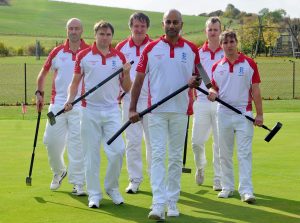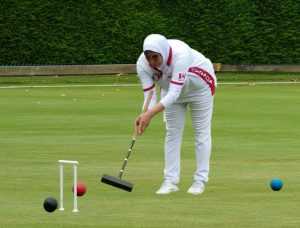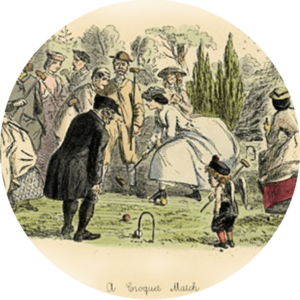
The History of Croquet
The origins of croquet are obscure, but we do still know a few things about where croquet started and how it gained popularity.
Where was croquet invented?
It’s thought that the sport was invented in Ireland and introduced to England in the 1850s. You’ll notice that croquet is a French word – it’s believed that the French person discovered the sport when it was brought over to England from Ireland in the 1850s.
The invention and popularity of croquet greatly benefitted from the invention of lawnmowers in 1830 and their subsequent development as it meant lawns could be kept tidy, which is important for being precise when hitting the ball with the mallet.
In the latter part of the 19th century and early 20th century, croquet rapidly grew in popularity and became an agreeable pastime for the upper classes. It was a game played on equal terms by men and women, whether old or young. Perhaps some of its popularity is because it was the first game to allow both sexes to play together?

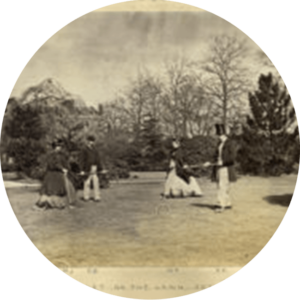
From first club to Olympic sport
The first club was formed at Worthing in 1860, with the rules first codified in 1864 at Chastleton House. National competitions commenced (the first official one was in 1870) and common rules subsequently agreed in 1870. It is curious to note that the putting of your foot on the ball during the croquet stroke was outlawed in this set of rules, yet it still persists in ‘home-brewed’ rules of croquet to this day.
The first national headquarters was the All England Croquet Club at Wimbledon, founded in 1868, which later was to become the All England Lawn Tennis and Croquet Club. However, the take-off of Lawn Tennis caused a decline in croquet popularity, and a large proportion of croquet lawns were turned over to the new game.
In the 1890s, however, tournaments were re-established and the game entered a new era until the First World War. In 1896, the United All-England Croquet Association was founded and renamed the Croquet Association in 1900. In 1900, croquet featured as a demonstration sport in the Olympics in Paris, with players from France winning all the medals and women participating in an Olympic sport for the first time. Regrettably, this is the only time croquet has featured in the Olympics.
The end of the 19th century marked one of the sport’s most popular periods, with croquet tournament reports appearing in many newspapers.

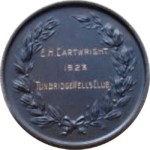
The impact of the two world wars on croquet
The Croquet Association had 2,300 members at the start of the First World War in 1914, but WW1 hit the sport hard. By the end of the war in 1918, the membership had fallen to 1,400, reflecting the deaths and number of clubs that never reopened after the war. Although many British soldiers learnt to play croquet during the war, sadly a number of them ended up in hospital.
Between the two world wars, the nature of the game changed. Prior to this time, there were multiple variations of the court layout and rules, but around this time, the current lawn setting (i.e. six hoops and one peg) was established, as was international play. By this time, the game had spread to Australia and New Zealand and many other British colonies. The first test match between England and Australia took place in 1925, with Australian entrepreneur Sir MacPherson Robertson presenting a trophy. The test match created a lot of enthusiasm around the game and the trophy is still fiercely competed for, with New Zealand and US teams also taking part.
The inter-war years also saw croquet become more commonplace as the sport rose in popularity even outside the aristocracy. Around this time, there was also a rise in women, who became more recognised as expert players. Dorothy Steel, otherwise known as D.D. Steel, dominated the championships, winning multiple games between 1929 and 1934.
The rules underwent significant modernisation between the wars. The sequence game – where the balls are played in the colour order according to the bands on the peg – was abolished, though American players still play a form of this traditional game. Croquet was also popular in Hollywood in the 1930s and 40s, with many stars playing, including Groucho Marx.
The outbreak of war again damaged croquet’s popularity and the sport had a very low profile until the 1960s. However, since then, an increase in leisure time and successful attempts to market the game has led to a surge of interest worldwide. An injection of some younger players in 1962 added momentum, as did the introduction of Golf Croquet when it was introduced in Egypt. Now the Croquet Association has more than 200 clubs and 7,000 members in England, making it more popular than it was at the end of the 19th century.
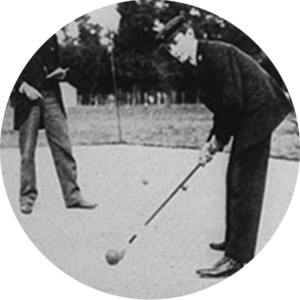
Croquet in modern times
Croquet is now very egalitarian and a relatively inexpensive sport with appeal to a wide range of abilities. In the past 20-30 years, far more young people have taken up croquet and players between the ages of roughly 25 to 45 form the backbone of international competition.
The World Croquet Federation was founded in 1989 and now has more than 29 country members, with most participating in the various world individual and team championships. There is more information about various aspects of the history of croquet, and other aspects of playing croquet, on the Oxford Croquet website.
Where is croquet most popular?
Croquet is now a global sport, spreading around the World from its roots in Britain. In the last decade or so it has become so popular in Spain and Egypt that they now compete at the highest International Level. Croquet is most popular in:
- UK
- Ireland
- The USA
- New Zealand
- Canada
- Australia
- Egypt
- Spain
- South Africa
